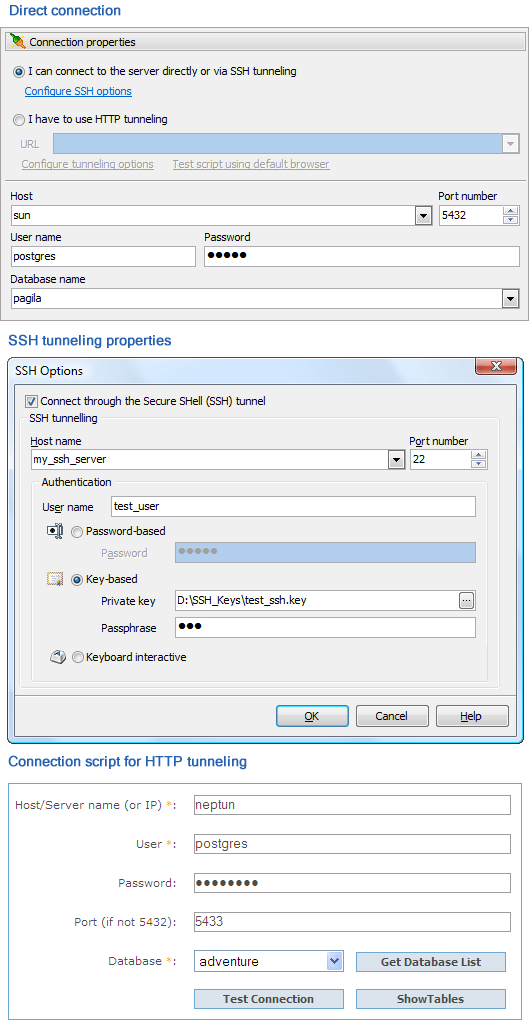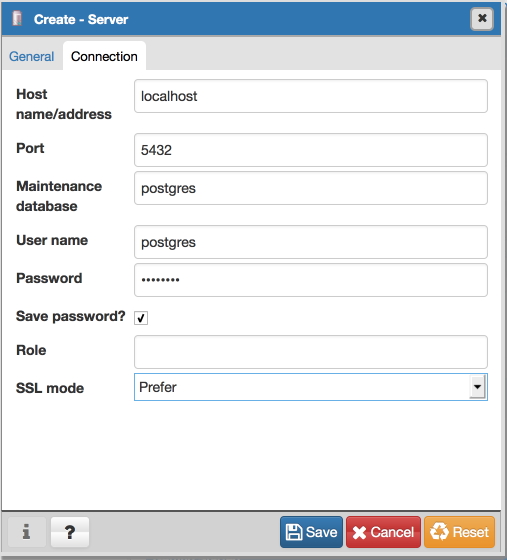

Strategy to be used in creating the new database. The character sets supported by the PostgreSQL server are described in Section 24.3.1. Specify a string constant (e.g., 'SQL_ASCII'), or an integer encoding number, or DEFAULT to use the default encoding (namely, the encoding of the template database). encodingĬharacter set encoding to use in the new database. The name of the template from which to create the new database, or DEFAULT to use the default template ( template1). To create a database owned by another role, you must be a direct or indirect member of that role, or be a superuser. The role name of the user who will own the new database, or DEFAULT to use the default (namely, the user executing the command).
#Postico create new database windows#
Postico supports MacRoman and Windows Latin 1 as alternatives.The name of a database to create. However, some apps expect a legacy encoding. You can uncheck this box to replace newlines with spaces.Įncoding: You should always choose Unicode/UTF-8 if possible. However, there are two more settings (mostly for compatibility with Microsoft Excel):Īllow Newlines: Some apps don't allow newlines in the data. This produces output compatible with the majority of applications I've tested. When a value contains a quote, the quote is doubled in the output NULL values are stored as empty fields (ie. This allows CSV to store data that contains special characters like the field separator or newlines. Most apps allow using double quotes (") around values that can contain special characters. It uses a comma (,) as decimal mark and a semicolon ( ) as field separator. The Continental Format is used in continental Europe and South America. It uses a period (.) as the decimal mark and a comma (,) as field separator. The International Format is used in English speaking countries and Asia. I've examined the CSV file support of popular applications, and I came to the conclusion that most apps understand one of two formats, which I call "International" and "Continental": This fact is made even worse by the fact that apps change behavior depending on your system's language & region settings. Unfortunately CSV is a very losely defined format.Īpplications implement CSV in very different ways.

You can also export query results in the SQL Query view. Postico will create a folder containing one CSV file per table. Then right-click and chose export from the context menu. You can export multiple tables by selecting them in the sidebar or in the grid view (hold down the shift or command keys). Otherwise you may end up exporting the selected table in the sidebar. Make sure the keyboard focus is on the table view when selecting export

If filters are active, they will be used, and only filtered rows will be exported. When exporting the current table (by selecting "Export" from the File menu),Īll rows in the table will be exported, even though Postico only displays the first page. You can export either a single table, or multiple tables at once. Postico can export tables and query results as "Comma Separated Values" (CSV) files. You should now see all your new data highlighted in yellow.Ĭheck that everything was pasted correctly, then click save to write changes to the database. Make sure that the keyboard focus is on the table view in Postico and paste your data. (Don't worry if either the source or target table have extra columns at the end Postico will simply ignore them) You can move columns by dragging the column header. This is great for importing data from spreadsheets in Excel or Numbers, or from MySQL databases using Sequel Pro, or even from tables on websites in Safari.Ĭreate a target table with all the columns you want to import, or use an existing table.Īrrange the columns in the target table in the same order as the original data you copied. Postico also allows pasting data in TSV format. Postico offers the following alternative formats for copying: TSV with headers, CSV, CSV with headers, SQL Insert Statements. You can also copy data in other formats using the "Copy Special" command. Postico replaces these special characters with spaces when you copy data to the clipboard. The limitation of this format is that your data can't contain tabs or newlines.
#Postico create new database mac#
Postico, like most other Mac apps, copies tabular data in "Tab Separated Values" (TSV) format: columns are separated by tabs, and row are separated with newlines. You are looking at the documentation for Postico v1.0.3 - would you like to go to the latest version instead? Importing and Exporting data in Postico Copy & PasteĬopy & Paste is the most convenient way to import and export data in Postico.


 0 kommentar(er)
0 kommentar(er)
